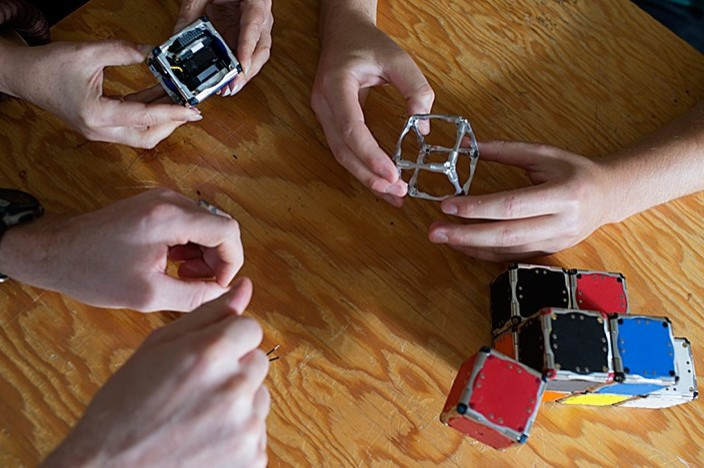Tiny Army Of Self-Assembling Robot Cubes Built By MIT Scientists

Your wooden building blocks from preschool are no match for the new class of cube-shaped robots designed by Massachusetts Institute of Technology scientists.
Unveiled in a video featuring the team of MIT researchers who built them, the extraordinary robots can flip, jump and assemble themselves into a range of different shapes. Named M-Blocks, the tiny robots have no external parts but are able to move by employing an internal flywheel mechanism. The cube robots are able to stick together with the help of magnets located on their corners. These also provide course correction and stability for the cubes, MIT News reports.
The robots are controlled by computer instructions that are sent through a wireless radio. But researchers hope that future robot fleets will be able to function autonomously through algorithms loaded directly into the blocks. Scientists envision that groups of these cubes could eventually be used to make temporary repairs to damaged bridges or assembled as scaffolding that could easily be reconfigured. And with their ability to adapt to their surrounding environments, the cube robots won't be exceptionally limited to their location of use.
The design for the modular robots was first presented in 2011 by John Romanishin, an MIT senior at the time. He proposed the idea to his robotics professor Daniela Rus, who thought it couldn't be done. But just two years later, Romanishin, now a research scientist in MIT's Computer Science and Artificial Intelligence Laboratory, and Rus are both part of the team that will present a paper at November's IEEE/RSJ International Conference on Intelligent Robots and Systems detailing their successful development of the robots.
"We want hundreds of cubes, scattered randomly across the floor, to be able to identify each other, coalesce and autonomously transform into a chair, or a ladder, or a desk, on demand," Romanishin said. The team of researchers are now working to complete an initial force of 100 robot cubes, block by block, making the dreams of Transformer lovers worldwide a slightly scaled-down reality.
© Copyright IBTimes 2024. All rights reserved.
Join the Discussion






















